Adages be damned, sometimes it’s just better to turn molehills into mountains and self described “public relations practitioner” Marc van Bree is no thinker of small thoughts. From his blog to the expanding number of social media related studies and papers, Marc’s mind is always moving in new directions. His TAFTO contribution is no exception and should be of particular interest to orchestra marketing professionals…
Flip the Funnel:
moving from today’s toward tomorrow’s customer experience
By: Marc van Bree

As a good Take A Friend To the Orchestra exercise, I could probably convince 10 friends to buy tickets to experience a night at the orchestra for the first time in their lives. But as the Oliver Wyman’s Audience Growth Initiative study shows, about nine of those friends probably won’t return the following year.
The big picture: contrary to popular belief, orchestras do a pretty good job at bringing new people into the halls, but they have a great difficulty retaining them year on year.
According to the Wyman study, nearly half of all patrons in a given season bought only one ticket and 86% of those patrons did not return the following season. Furthermore, about half of all patrons in a given season attended a concert for the first time and 85% of those patrons did not return the following season. Those patrons—with an exceptionally high churn rate—are generally dubbed the “unconverted trialists.”
The churn rate for the “core audience,” or patrons who have attended numerous concerts for many years, on the other hand, was only 10% (and if I may callously speculate, that’s probably because they died!). The revenue, including both sales and donations, difference between the unconverted trialists and the core audience over five years is significant: $199 against $4,896.
There can be a plentitude of reasons for the unconverted trialists not to return the following year, but they really all come down to the customer experience. What the Wyman study found was that for the core audience, music
itself is the experience, whereas for the unconverted trialists, everything is the experience. These trialists expect a seamless end-to-end experience.
Today’s customer experience
We can broadly distinguish three core stages of the end-to-end experience: the courting and purchasing process, the event itself, and the follow up. Let’s look at the way orchestras have long brought in new patrons and how they have treated those patrons at and after the concert.
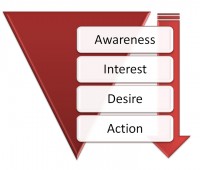 The long-established model of marketing, explained by the acronym AIDA, takes the shape of a funnel. At the wide top of the funnel, organizations throw a lot of money at an extremely broad audience to attract attention and generate awareness (A). Then, they spend a bunch of money to get those who are aware of the product interested (I) in the product. A lot of effort is put into making those who are interested believe the product will satisfy their specific needs, so that they desire (D) the product. And lastly, those desiring potential customers finally take action (A) and make the purchasing decision.
The long-established model of marketing, explained by the acronym AIDA, takes the shape of a funnel. At the wide top of the funnel, organizations throw a lot of money at an extremely broad audience to attract attention and generate awareness (A). Then, they spend a bunch of money to get those who are aware of the product interested (I) in the product. A lot of effort is put into making those who are interested believe the product will satisfy their specific needs, so that they desire (D) the product. And lastly, those desiring potential customers finally take action (A) and make the purchasing decision.
In short, a costly process of weeding out the uninterested and unresponsive; a labor-intensive process of guiding a large group of potentials through a narrowing funnel to end up with a small group of ticket buyers.
After the courting process and the purchasing decision, a myriad of variables frame the concert experience for this small group of ticket buyers. It’s not just about a great, inspiring performance by the orchestra. It’s also about the easy parking process, the great dinner options before the concert, the friendliness of the will-call box office staff and the ushers, and yes, even the friendliness of the fellow concertgoers. As you can see, some of the variables are somewhat beyond the control of the organization. What can you do, for example, when a grumpy long-time patron chews off a newbie’s head when clapping too early?
The Wyman study explains that “unconverted trialists are affected by all the peripheral aspects of an evening at the symphony, from finding a parking spot to the line at the bar during intermission.”
Just as the customer experience doesn’t begin with the concert, it doesn’t end after the concert either. The customer experience is the total sum of any point of contact of the customer with your brand. From an ad in the paper to the ticket agent on the phone, from the purchasing process online to the parking and dining options, from the music to the fellow concertgoers, and from the line at the bar to the follow up by telemarketing, telefunding and direct marketing campaigns.
And how you follow up is very important. We all know the stories of people who went to one concert and were bugged or begged only a week later to purchase expensive subscription packages or donate an exuberant amount of money. Not to mention the storm of direct marketing mailings they will start to receive.
I can’t help but think the following is a very typical story at orchestras across the country. In my first year of working at an orchestra, I contributed $150 to the annual fund through an employee initiative. The following year, I received a phone call from a representative in the telefunding department. The poor representative, who was following a written script, had no idea he was calling someone inside the very same building, someone who was working for the very same orchestra. But here’s the kicker: he was asking for a $1,500 donation, an amount 10 times greater than what I donated a year prior!
As the Wyman study so aptly states: “Don’t ask me to marry you after the first date.”
Tomorrow’s customer experience
With all this in mind, let me introduce you to Joseph Jaffe, president of crayon, a conversational marketing company, senior fellow at the Center for the Digital Future at the USC Annenberg School, and author of “Flip the Funnel: How to Use Existing Customers to Gain New Ones.”
What if we turned things, quite literally, around? What if we flipped the funnel? What if, rather than starting with a broad, unaware audience, we started with an acknowledgement? The parallels to the world of classical music and particularly the Wyman study are simply uncanny. The Wyman study advises orchestras to start focusing on “nurturing unconverted trialists toward becoming core audiences.” Jaffe talks about “why retention is the new acquisition.”
Our goal then is to turn unconverted trialists into active Take A Friend To the Orchestra organizers (and not just one time in April).
Let’s start with actually flipping the funnel. Jaffe does this by turning the acronym around—ADIA—and coming up with a new meaning for the four letters.
Acknowledgement
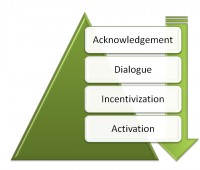 No more blissfully unaware audience as a starting point. Jaffe starts with acknowledgement (A) after the purchase. He lists several ways. First and foremost, a simple thank you is very powerful. Then there are progress reports (“since you placed your order, the price has dropped, and the difference will be applied to your account”), courtesy check-ins, follow ups and reminders. The point of all of these is not to sell, but to enhance the customer experience (of which customer service is only a part).
No more blissfully unaware audience as a starting point. Jaffe starts with acknowledgement (A) after the purchase. He lists several ways. First and foremost, a simple thank you is very powerful. Then there are progress reports (“since you placed your order, the price has dropped, and the difference will be applied to your account”), courtesy check-ins, follow ups and reminders. The point of all of these is not to sell, but to enhance the customer experience (of which customer service is only a part).
Remember the grumpy, long-time subscriber that attacked the newbie with a cane earlier? (Okay, I’m exaggerating. Barely.) The newbie probably won’t know to go to the house manager. But what if there is a proactive courtesy check-in by an orchestra representative during intermission? “How’s your concert going today?” Customer service is proactive, not just reactive.
Dialogue
After the acknowledgement (A), there is dialogue (D), and increasingly, this dialogue takes place online. Already in 1999, the ground-breaking Cluetrain Manifesto told us that markets are conversations.
Traditionally, organizations only talked to people. But people are talking out there about you in public—on Twitter, on Facebook, on blogs, and for orchestras on sites like Dilettante and InstantEncore—and you can’t ignore what’s being said about your brand, even though you can’t control it.
Jaffe maintains that the role of marketing is to encourage and engage in dialogue. As Doug Dome, a 25-year integrated marketing veteran in Chicago, told me recently: “It’s much easier to engage than to manipulate.”
Now manipulation calls to mind horror images from Soviet propaganda, but for our purposes it really just comes down to advertising, public relations and sales. Respected social media author David Meerman Scott talks about three traditional ways that companies talk to people: they buy attention (advertising); they beg for attention (public relations); or they bug people to get attention (sales). But there is a better way: you can earn attention. And that’s where social media comes in.
Over the past decade, the Internet has moved toward becoming a social medium with more participation (encouraging contributions), openness (no barriers to content and feedback), connectedness (networked relationships and sharing content), community (gathering around a common interest), and, of course, conversation (a two-way street).
The Cluetrain Manifesto, still pertinent after more than 10 years, tells us that “conversations among human beings sound human. They are conducted in a human voice.” And that means being authentic. Don’t pretend like Sprint president Dan Hesse. We’ve all seen the charming television commercials in which customers are invited to e-mail him at dan@sprint.com. Try it and see if you get a response other than an automated one…
Jaffe recommends several elements: creating a listening and response strategy and building the optimal mix of technology and human resources. Dialogue needs to be ingrained in your strategy, processes and organizational culture because, as Jaffe writes, “without cultural buy-in, organizational resource allocation, system integration, and best practices are like a transplanted organ rejected by its host body.”
Incentivization
And so after acknowledgement (A) and dialogue (D), we move forward to incentivization (I).
The Wyman study identified various factors that influence customer behaviors, including the core product—the musical experience—as well as music enhancement (information and commentary); access (parking and public transit); social experiences (meeting friends and meeting the musicians); and transactions (purchasing process and exchange options).
The study found that offering unconverted trialists certain “killer offers,” where there is an optimal combination level of attributes (this may include incentives like buy-on-get-one-free, free parking, free drink at the bar, free exchanges), see a much higher response rate. Wyman recommends this use of finely tailored promotional offers to sell another single ticket or two to unconverted trialists before asking for a commitment.
In other words, invite them on a couple of dates before going steady (subscriptions) and eventually popping the question (donations).
And don’t forget to reward your core audience. Jaffe warns against slapping existing loyal customers in the face by heaping endless discounts and perks on new customers. And you know what? Your loyal core audience has been playing Take A Friend To the Orchestra for years. Jaffe speaks of rewarding those who are inclined to talk about you and recommend you to others, so that they don’t feel like being taken for granted and so that you might increase the probability of the number of recommendations. Word-of-mouth recommendations are strong influencers, so why not make it easy and worthwhile to spread the word?
Activation
The last part of the flipped funnel, where the funnel is at its widest, touches communities and social networks and the activation (A) of advocates. Jaffe writes that the role of marketing in this part is “to ignite activation.” It’s all about a technological framework and organizational process supporting a new customer-centric ecosystem. It’s about allowing customers to be advocates and evangelists.
Think about the Leukemia & Lymphoma Society’s (LLS) Team In Training program, which has raised more than $1 billion over the past two decades. LLS excels in igniting advocates with their sports training programs that turn athletes into fundraising machines. LLS has put a technological framework (personalized Web pages for participants) and an organizational process (staff and clinics to help participants) together that allows and facilitates the participants to become LLS evangelists.
Now, unless you have a significant amount of money and join an orchestra’s board of trustees, there are few options for people to activate their communities and networks on behalf of orchestras. Referring back to the terms participation, openness, connectedness, community and conversation I mentioned earlier, perhaps the volunteer office of the 21st century can provide the organizational process to facilitate the activation of 21st century advocates through a social and technological framework, including, but not limited to, social media tools like Facebook, Twitter and customized online communities.
And if we’ve learned anything from the past, we know that this framework of activation can go a long way toward putting a candidate in the White House.
From funnel to megaphone
And there we have it; the flipped funnel. It might come as no surprise that Seth Godin, one of the most popular and best-selling marketing authors today, thinks of the funnel as a megaphone. It’s not about funneling down from many to one, but rather funneling from one to many; turning your customers into evangelists.
But you can only achieve this when you have an impeccable end-to-end customer experience with customer service as a strategic driver. You can only achieve this when you realize, as the authors of the Cluetrain Manifesto did more than a decade ago, that “markets consist of human beings, not demographic sectors.” You can only achieve this when you are engaged with and within your community, online and offline.
The only way Take A Friend To the Orchestra can be effective is if those who are taken to the orchestra return time and time again. Above, you have read how orchestras can make sure they not only return, but establish a continuous circle of friends taking friends to the orchestra.
Read Marc’s bio and more at the TAFTO resource site.
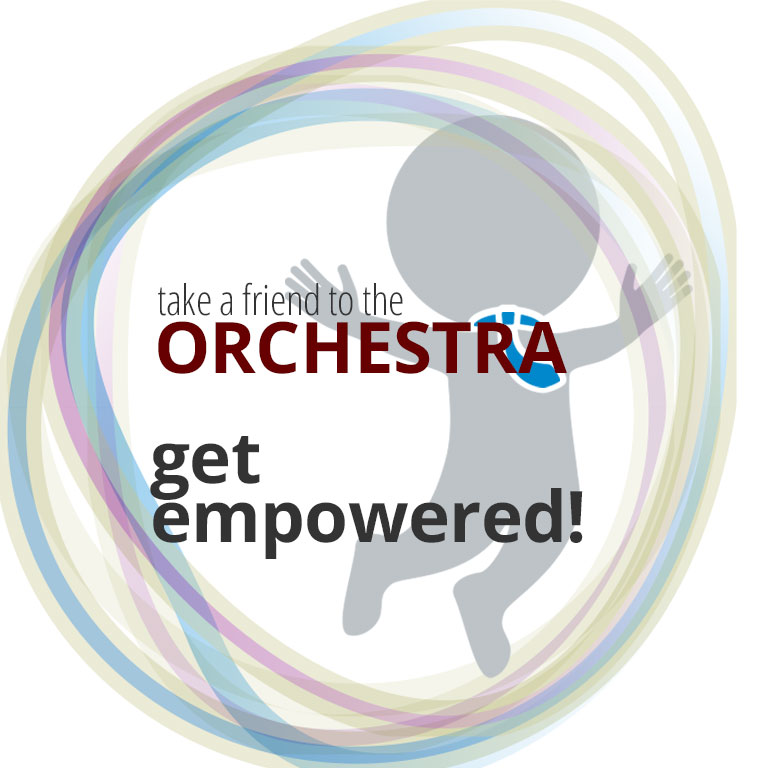
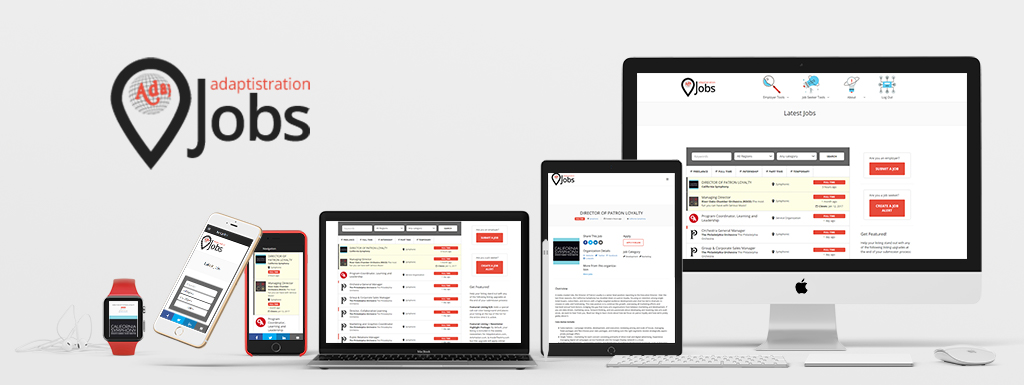
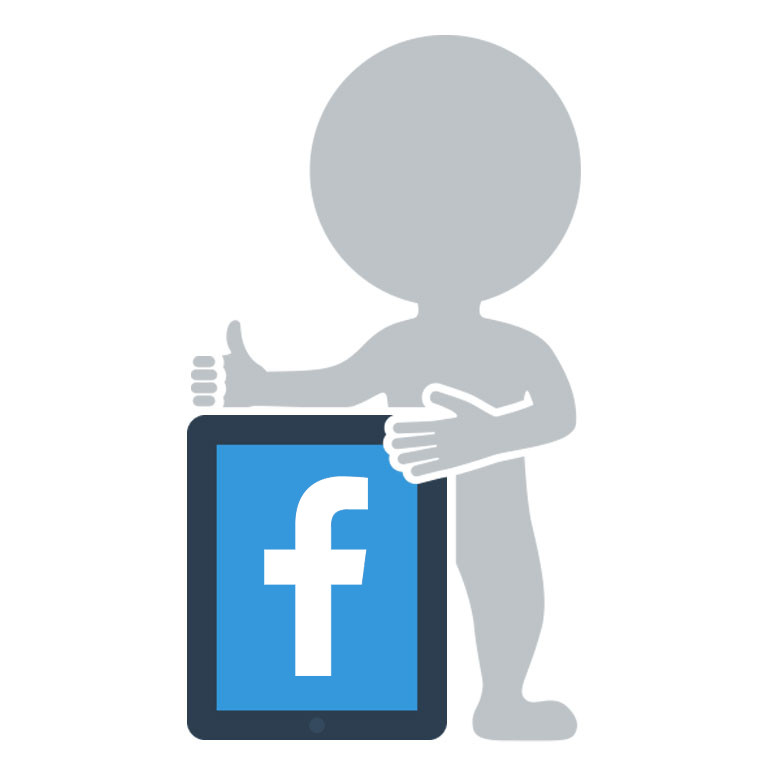
Well said, Marc!
I think my only (very little) quibble comes with the introductory comments (sorry Drew!) which suggests that the article “should be of particular interest to orchestra marketing professionals.”
The core marketing tool here is “the experience.” To effect the paradigm shift Marc proposes I think requires the embrace of everyone involved in the organization…music director, musicians, ushers, box office, marketing,development…and audience.
In other words “All hands on deck!”
No arguments there Chris and it crossed my mind when writing the intro. But more often than not, these initiatives have to be embraced by the individuals who are traditionally tasked with the responsibilities surrounding so many of the individual concepts Marc examined.
Without buy-in from that crucial point of contact, so much of what was covered won’t even have an opportunity to get off the ground. In many ways, this is a new way for marketing professionals to think and during a time when so much pressure exists to increase marketing performance, it becomes that much harder to stray away from the comfortable (even when it hasn’t hasn’t been delivering high enough results).
Thanks Chris!
I suppose, in the end, the customer experience-driven strategy needs to come from the very top, the executive director or president and the board.
But I think logistically, it makes most sense to have a marketing department that leads the effort with the buy-in from other departments.
You are correct to think that it involves “all hands on deck.” Operations will work with the ushers and house manager, development obviously needs to align with the new strategy, and so on.
Fair enough, I see your point here. Perhaps I am too used to starting projects from scratch, where there are fewer preconditions.
I have noticed in some orchestras with large staffs a high degree of compartmentalization of expertise. This comes quite naturally to hierarchical organizations. But some time this ends up with people losing sight of the bigger picture, not to mention out-of-the-box thinking.
I guess where my comment came from is that if we are to ask the marketing department to leave their comfort zone, might others not be asked to do the same?
I think others most certainly would, I suppose I look at it as a process and the first step in that process is marketing since they will likely have the largest direct personal stake in the outcome.
Thank you, Drew and Marc. I love to have my core beliefs challenged as with this superb post.
Can we take action using the AIDA funnel? We don’t know who’s aware, interested in or desires the orchestra experience. We have to use less expensive proxies for that information such as participation in other musical experiences.
If we ask people–if rely on what people say rather than what they do–we’re sure to be misinformed. The reason orchestras telephone and mail first-time buyers with subscription offers is that they say they won’t respond, but in fact they do. Consumer response rates drive those marketing decisions, and may they do that forever. Using the Oliver Wyman language, people indeed marry us after the first date.
Perhaps with social media we will be able to know who’s interested and desirous of interaction. I also find your discussion of the reverse funnel fascinating, since acknowledgment, dialogue and the activation of advocates fit so well with today’s technologies.
Those are good observations Bruce and I think much of what Marc has proposed would serve as an excellent research project for a foundation or other philanthropic organization.
Bruce, thank you for your comment. Great to hear from you.
The 90% number of people not returning didn’t come from what people told the Wyman researchers, it came from sales data.
Surely, you will see responses with immediate follow-up offers for subscriptions or donations. I’m very curious what response rate to subscription offers and donation requests you experienced from first-time buyers?
If we take the Wyman study, the response rate for the unconverted trialists seems a meager ten percent (of returning at all!). But most importantly, at what cost does that ten percent respond? How many of the 90% do you permanently turn off with the irrelevant bugging and begging?
I’ve seen it in e-mail marketing many times. Every e-mail you send sees some new sign ups or some new customers. The numbers remain low, so there is pressure to send another e-mail. And another. Again, every e-mail sees some new customers. But at what cost? Per e-mail, I generally see more people unsubscribe from the list than people sign up for the event. So you permanently lose more future customers than you gained short-term customers.
Also, I’m not arguing for a complete abandonment of traditional acquisition efforts with the AIDA model. As said, orchestras are doing a good job bringing people in, precisely due to proxy information and behavioral targeting. But it’s keeping them that’s the issue. Keeping them and turning them into TAFTO participants. Today’s technology is just that: technology. It’s the underlying principle of customer experience-driven strategy that is the important element.
Hi Marc,
Yes, the 90% figure is a good one. Yet I question whether that figure has been driven down rather than up by past marketing efforts.
Virtually all of the new subscribers I’ve brought in have come through direct mail, the telephone sales and advertising. As you point out, email can be disappointing. I believe that’s because it’s less intrusive.
Response rates for the individual initiatives I’ve undertaken have been all over the map depending on the offer, the time of year, the type of performance attended, and the medium employed. To an outside observer response rates would look low–single digit percentages. Yet the cost rarely equaled the first-year benefit of most programs, let alone the lifetime value.
I applaud your desire to keep customers and turn them into TAFTO participants using new technology. Your initial post opened my mind to the idea of the reverse funnel. And I applaud the Wyman experts, Jack McAuliffe and the nine orchestras who participated, for examining this question systematically and with passion. For those unfamiliar with their work, look at http://www.oliverwyman.com/ow/pdf_files/SYMPHONY_EN_PUBL_2009IntoThinAirArticle.pdf
Kind regards,
Bruce
Good stuff Bruce, the discussion here is an interesting one and from my perspective, might be indicative of some of the reasons why the business gets in its own way from time to time. Whereas direct marketing sourced from the host institution, regardless of the medium, experiences varied results – as Bruce points out – we have yet to see any research into the impact of patrons involved in self-inspired audience development activity.
Are there consistent returns? Is response and retention higher or lower than traditional efforts? Etc. One of the problems here is the medium for these efforts is still new enough and there are no undisputed experts with mountains of success to serve as a resource.
It’s as through we’re all standing on the edge of a cliff and can see green pastures on the other side but we have no idea how to build the bridge.
Moreover, these efforts are much harder to quantify but that doesn’t mean there isn’t potential. Systems Dynamics expert, Bill Harris, explored this in great detail from a theoretical and conceptual model perspective in his TAFTO 2007 contribution.
Consequently, I’m beginning to think the only way we’ll see any relevant data on this application anytime soon is by studying an ensemble with a next-to-no-budget marketing plan that has to rely on guerrilla marketing tactics.
Ultimately, there needs to be an infusion of these ideas to supplement traditional methods. The longer we wait, the longer it will take catch up.
Bruce, thanks for keeping the good discussion going.
I’m not arguing that direct mail, telephone sales and advertising can’t bring in new subscribers. Those methods obviously have brought and continue to bring in people, but if we’ve learned anything, especially from the success of Google, it’s that relevance is the key differentiator. In other words, I’m not saying the traditional methods don’t work, I’m saying that it can be done better.
Moreover, I’m not arguing either that organizations should solely rely on patrons to become evangelists and deliver ticket revenue. The ultimate goal is to turn a first-timer into an evangelist, but that doesn’t mean all other marketing efforts should be abandoned.
But what’s happened in the past is that every single ticket buyer and every single contact on a list would receive these direct mail, telephone and advertising efforts. Again, if you send out enough direct mail pieces, you eventually get to a filled house. Sure the cost per acquisition is low, especially compared to long-term customer value, but in the process, how many possible leads have you lost? The age of mass marketing is over; it’s about customizing and personalizing.
You say yourself that response rates have been all over the map depending on the offer, time of year and other factors. What the Wyman study showed is that response rates are much better when you nurture a patron and offer them a deal that is much more relevant to them (this deal comes from the organization, not from patron evangelists).
Going back to Google: they much rather display an ad that is more relevant than an ad that has a higher revenue per click, not only because the relevant ad brings them more value over time, but also because it establishes Google as a credible service that offers people what they want. In search terms, that’s why they beat out Altavista, because their searchers were much more relevant. Altavista offered you all the options, Google offers you the most relevant options.
Google has already put into the world display ads based on behavior. Let’s say you visit a couple of digital camera Web pages, maybe even put a digital camera in your Amazon check out basket. Then display ads provided by Google on another site, a newspaper site for example, will be about digital cameras (even if the article you’re looking at is not necessarily about digital cameras).
In the end, whether the 90% figure has been driven down rather than up by past marketing efforts doesn’t matter. The number is still abysmal and my point is that the Wyman study has proven that relevance is a more effective way to bring that number down than traditional mass marketing efforts. What I’m offering is a way to integrate social media and a customer experience-driven strategy into this new way of thinking. No one element alone will solve the problem, it’s about the integration of the elements, but I think we can all agree that the age of mass marketing is definitely over.
I’ve been a full-season (all concerts) subscriber for over 25 years… I get emails all the time from the Orchestra. None of them ask me to bring people or talk up the symphony. An idea: Send me an email showing my name and patron number and ask me to forward it to friends who will in turn get a discount (5-10%, let’s say) if they present the email or can furnish the number when ordering tkts on the phone. That explicit suggestion (with incentive) for the existing subscribers to recruit visitors or prospects might help.
Bill in Dallas
That’s a great idea Bill, I’ve suggested something like that in the past but haven’t mentioned it in some time so I appreciate your bringing it to the forefront. In some instances, orchestras are limited by the box office software they have to use (or that which is provided by the venue(s) they rent) but in cases where those hurdles don’t exist, it would be wonderful to see something like this put in place and tracked. to be fair, I do know of groups that have done something like this, but I don’t recall if it was a dedicated effort via social and email efforts and whether or not the results were tracked.
Bill, thanks a lot for your suggestion and your perspective.
We, or I rather, can talk all I want about new models and strategy, but it really all comes down to the patrons. Great to see you react positively to the model and contribute a great, practical idea.
To take it even further, perhaps you could start earning frequent-concert-goer-miles and bonus miles when people book tickets mentioning your patron number.